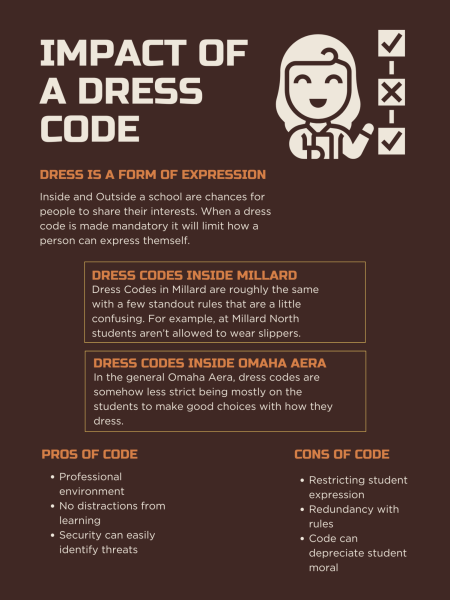No More Self-Checkouts
Reasons against the use of the machines in grocery stores
Photo from Toshiba
December 7, 2018
While walking through the grocery store to pick up a few items can be a pain, self-checkouts can help ease the pain. However, they are becoming more of a problem than a convenience.
In September, the 180th and Q Street Hy-Vee switched to the new self-checkouts, joining Walmart and Target in implementing the system in the area.
All three of these have received both praise and backlash from the public for their changes to a more modern way of checking out, but the self-checkout systems are not a great move for the businesses and the community.
With self-checkouts, it takes one person to keep self-checkout registers open, whereas they would have to schedule three to four people to help on normal registers. With that means a lot of lost jobs or hours for employees. At Hy-Vee currently, the number of scheduled employees have gone down in both full-time and part-time employees. A typical weeknight had around 10 employees, but that number has since dropped down to six or seven at the same time.
If an employee is not working, they are not making money. Many rely upon the income they make to help support themselves and their family, or some need money to help pay for schooling and other expenses. With hours getting cut, an employee is not there to make the money that they might need in the future.
As the store becomes busy, employees from other departments are called to help bag or check, preventing their work from getting done. Being an employee in a different departement, the typical night I spend between an hour and a half to two hours helping up front, with bagging and checking people out. That number was lower before self-checkouts, as more employees were scheduled up front.
If we have computer systems taking the workload over the employees, a store is losing someone that can be very helpful outside of just being a cashier. They do not have someone there to help a customer. There is not someone there to help represent and build relationships with customers, and ultimately make them want to shop there again.
Self-checkout registers are computers, therefore they will not always be accurate. Coupons are hard to use, as the computers will not recognize them without the authentication of an employee. Prices for items on the shelf do not always match up with what is in the system, which then makes it difficult to change again. And as long as they are computers, they will always have errors in the system, need updates and will need different maintenance over time.
Theoretically a self-checkout is cheaper over time. The systems just cost Hy-Vee around $15,000 a piece, not including the costs to have them installed by professionals and the cost of tearing out the old flooring and replacing it. That does not even include the costs that might come up on having to get the systems fixed if they start to malfunction or wear down.
Self-checkout systems are not a great solution for today’s society and stores should consider just keeping their normal registers instead. Efficiency is everything in this world, but one way to counteract that is to keep jobs and the personal connections employees and customers make.
















